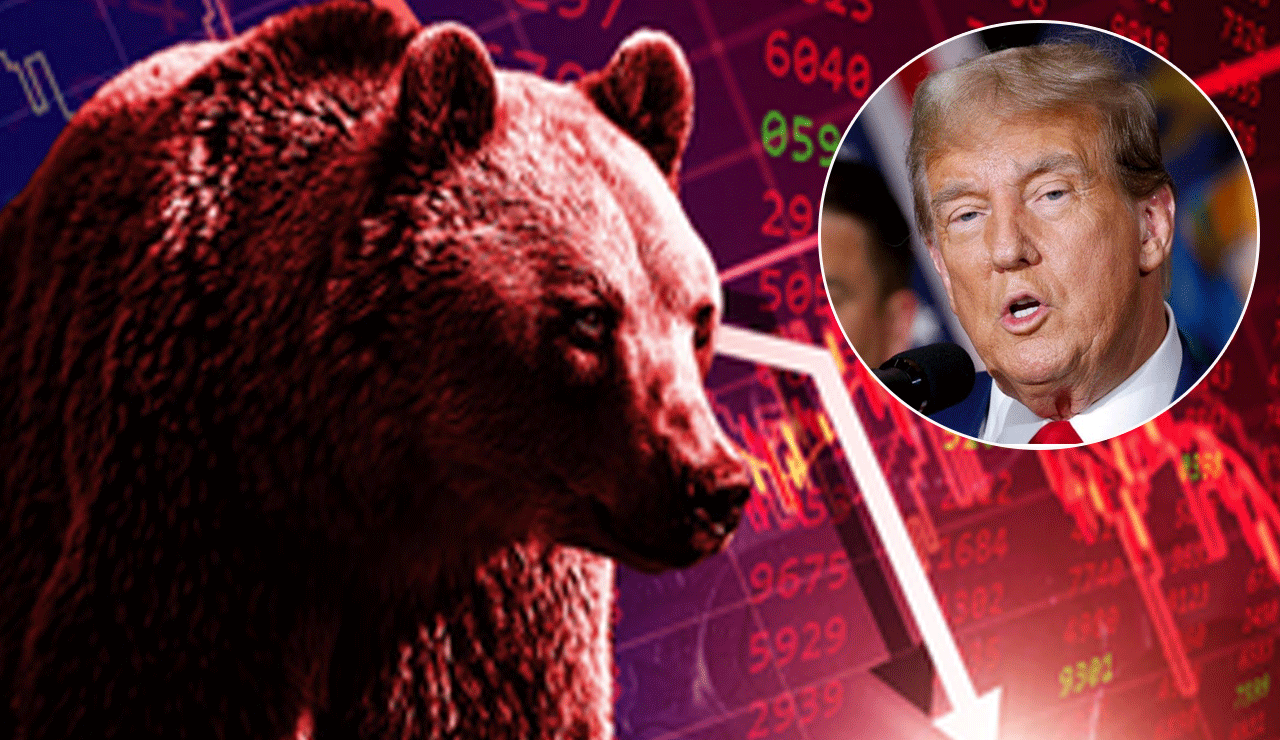
Washington, D.C. / Global Markets:
The global stock markets are showing signs of extreme volatility as fears of a 1987-style market crash resurface. Former U.S. President Donald Trump’s aggressive tariff policies have ignited panic from Asia to Wall Street, with analysts warning of a potential financial crisis.
Trump’s Tariffs Trigger Global Sell-Of
In a controversial move, Trump imposed retaliatory tariffs on nearly 90 countries, sparking outrage and economic uncertainty. His trade war strategy has faced growing opposition, and market analysts are now warning that this could have dire consequences.
Markets across Japan, South Korea, China, Hong Kong, Taiwan, and India plunged between 3% to 10%, reflecting investor anxiety. Major indices in the U.S. have also shown steep declines in response to global cues.
Analyst Warns of Repeat of 1987’s Black Monda
Veteran U.S. market commentator and Harvard Law graduate Jim Cramer warned that the situation could mirror the infamous Black Monday crash of October 19, 1987, when the Dow Jones Industrial Average fell a staggering 22.6% in one day. The S&P 500 also lost 30% of its value, causing ripple effects across Europe, Asia, and Australia.
Cramer urged Trump to immediately engage in diplomatic discussions with trade partners to remove retaliatory tariffs, or risk another financial collapse.
Historical Parallels: 1987 vs. 2025 Market Conditio
Experts believe that multiple factors led to the 1987 crash, including a prolonged bull market, overvalued stocks, and sudden corrections. Similarly, today’s market has seen significant post-COVID growth, leading to fears of a major correction.
In recent days, the U.S. market has witnessed its worst performance since the pandemic, with a $5 trillion loss in market cap. On Sunday alone, Dow Jones futures plunged 1,405 points, while S&P futures dropped 4.3% and the Nasdaq 100 fell by 5.4%.
Asian Markets in Deep Red
Monday morning saw a bloodbath in Asian markets:
- Japan’s Nikkei fell nearly 8% at one point and settled with a 6% loss
- Taiwan index dropped 9.61%
- South Korea’s KOSPI declined 4.14%
- Shanghai Composite slipped 6.5%
- Australia’s ASX was down by 3.82%
The domino effect triggered by U.S. trade policies is pushing investors worldwide into risk-off mode, seeking safer assets amid uncertainty.
Will Market Circuit Breakers Save the Day
After the 1987 crash, circuit breakers were introduced to prevent future market collapses by halting trading during extreme sell-offs. However, with mounting geopolitical tensions, unpredictable economic policies, and rapid global sell-offs, these mechanisms are being tested once again.
Stock Market Crash Fears Loom as Trump Tariffs Spark Global Panic
Washington, D.C. / Global Markets:
The global stock markets are showing signs of extreme volatility as fears of a 1987-style market crash resurface. Former U.S. President Donald Trump’s aggressive tariff policies have ignited panic from Asia to Wall Street, with analysts warning of a potential financial crisis.
Trump’s Tariffs Trigger Global Sell-Off
In a controversial move, Trump imposed retaliatory tariffs on nearly 90 countries, sparking outrage and economic uncertainty. His trade war strategy has faced growing opposition, and market analysts are now warning that this could have dire consequences.
Markets across Japan, South Korea, China, Hong Kong, Taiwan, and India plunged between 3% to 10%, reflecting investor anxiety. Major indices in the U.S. have also shown steep declines in response to global cues.
Analyst Warns of Repeat of 1987’s Black Monda
Veteran U.S. market commentator and Harvard Law graduate Jim Cramer warned that the situation could mirror the infamous Black Monday crash of October 19, 1987, when the Dow Jones Industrial Average fell a staggering 22.6% in one day. The S&P 500 also lost 30% of its value, causing ripple effects across Europe, Asia, and Australia.
Cramer urged Trump to immediately engage in diplomatic discussions with trade partners to remove retaliatory tariffs, or risk another financial collapse.
Historical Parallels: 1987 vs. 2025 Market Conditions
Experts believe that multiple factors led to the 1987 crash, including a prolonged bull market, overvalued stocks, and sudden corrections. Similarly, today’s market has seen significant post-COVID growth, leading to fears of a major correction.
In recent days, the U.S. market has witnessed its worst performance since the pandemic, with a $5 trillion loss in market cap. On Sunday alone, Dow Jones futures plunged 1,405 points, while S&P futures dropped 4.3% and the Nasdaq 100 fell by 5.4%.
Asian Markets in Deep R
Monday morning saw a bloodbath in Asian markets:
- Japan’s Nikkei fell nearly 8% at one point and settled with a 6% loss
- Taiwan index dropped 9.61%
- South Korea’s KOSPI declined 4.14%
- Shanghai Composite slipped 6.5%
- Australia’s ASX was down by 3.82%
The domino effect triggered by U.S. trade policies is pushing investors worldwide into risk-off mode, seeking safer assets amid uncertainty.
Will Market Circuit Breakers Save the Day?
After the 1987 crash, circuit breakers were introduced to prevent future market collapses by halting trading during extreme sell-offs. However, with mounting geopolitical tensions, unpredictable economic policies, and rapid global sell-offs, these mechanisms are being tested once again.
